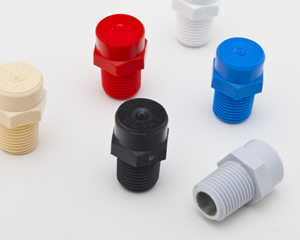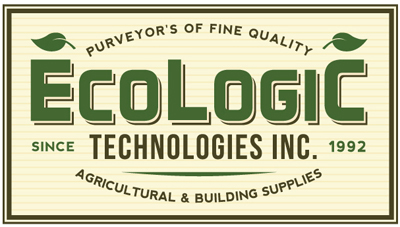How to Clean Plastic Misting Nozzles
Most plastic misting nozzles are inexpensive enough to be considered disposable. That is unless your water quality is so bad that your constantly fouling up nozzles. In this case it might be wise to consider adding a high quality water filter to your system. The simplest, least expensive and most effective are the basic canister filters with the pleated or woven filter cartridges.

A variety of methods for cleaning your plastic misting nozzles are provided below. While some might find one method more effective, another might achieve better results with a different method. Results may vary because of variances in the equipment or chemicals used to the type of contaminants that are fouling the misting nozzles.
Through trial and error and a little experimentation, satisfactory results should be achievable using one (or a combination) of the following methods, allowing you to increase the useful life of your misting nozzles.
Keep in mind that plastic misting nozzles will sometimes succumb to orifice erosion due to additives, chemicals, or hard water. Over time, erosion of the misting nozzle orifice will alter spray patterns and flow rates, leading to a reduction in performance and effectiveness of the entire misting system. And no amount of cleaning will correct this. So every once in awhile nozzles should be replaced if constant optimal performance is a consideration. Dirty or clogged misting nozzles can lose 50% or more of their flow capacity, causing back pressure on the pump that can lead to pump failure. Yet another good reason to change or clean your misting nozzles frequently.
The most common method of cleaning nozzles is by soaking them overnight in a solution of CLR and then brushing them with an old tooth brush. CLR stands for calcium and lime remover and is available at most hardware and even some grocery stores (safe enough to use in coffee pots).
If CLR doesn't do the trick you can try spraying out the misting nozzle with a can of compressed air. The same kind that’s sold at office supply stores to clean keyboards and other electronics.
Many folks have reported great success cleaning misting nozzles with ultrasonic jewelry cleaners. This method is probably the least labor intensive and large batches can be done at the same time.
Vinegar and water. Just soak the plastic misting nozzles overnight in a mild solution of vinegar and water and then brush with an old toothbrush.
If all else fails, you can try a piece of piano wire. Although this method might damage a polycarbonate core or the orifice of the nozzle, it might be worth trying even though compressing or pushing the blockage farther into the nozzle might just make the problem worse. You can buy piano wire by the foot at some music stores. Just tell them you need a foot or two of the finest wire they have.
